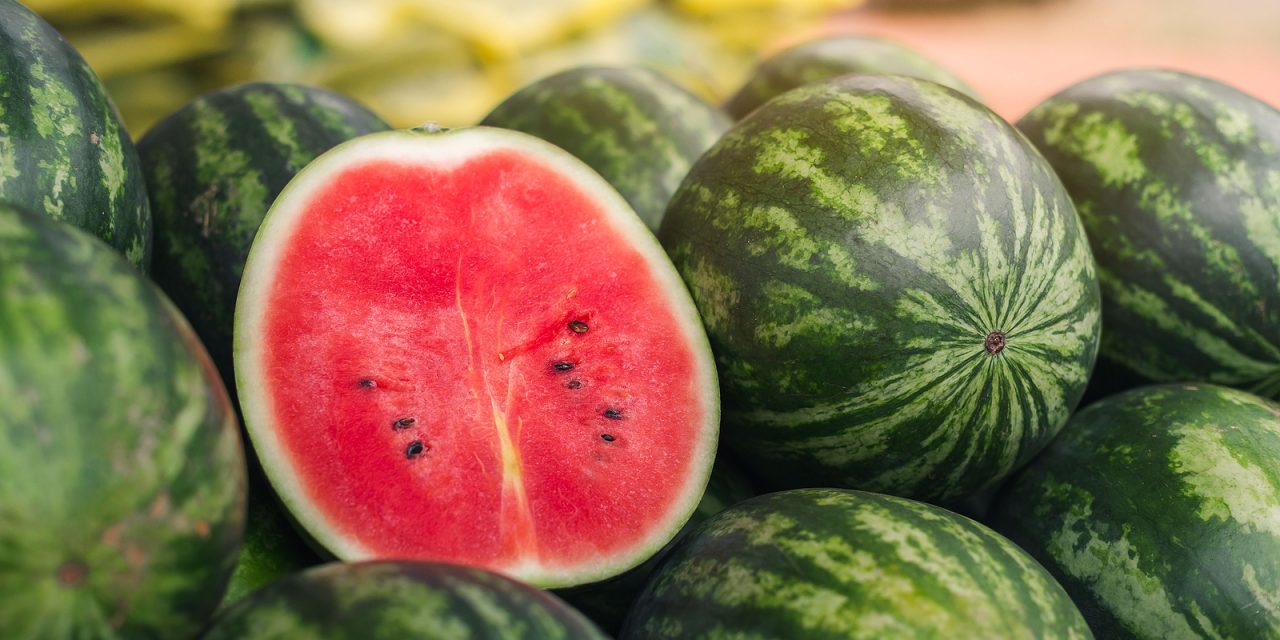Nothing screams summer like a big, juicy watermelon! According to the USDA Economic Research Service, more than 100,000 acres of watermelons were grown in the U.S. in 2020, producing 38 million pounds.
Each year, hundreds anticipate the second Saturday of August, so they can make the trek to the watermelon capital of Oklahoma and celebrate the Rush Springs Watermelon Festival. One of the highlights of the festival is the seed spitting contest. If you’ve never experienced it, you’re really missing out! It’s funny.
Watermelons grow prolifically in Oklahoma, and there are many varieties to choose from. Like okra, they are heat-loving plants, so they do well in Zone 7. They are comprised of 90-92 percent water (thus the name), so if you want a good crop, consistent watering is essential. Like most cucurbits that do not like to be disturbed by transplanting, watermelons are best started from seed and planted in a compost rich, sandy loam area with plenty of room to spread. They are heavy feeders so monitoring their nutrients throughout the growing season is important.
In the 1990s, commercial growers introduced seedless watermelons to consumers, and since that time approximately 92 percent of all watermelon sales come from seedless melons. Whether its watermelons, grapes or other foods I’ve always been fascinated with the desire for a seedless option.
In Gen. 1:11-12 we read, “Then God said, ‘Let the earth sprout vegetation, plants yielding seed, and fruit trees on the earth bearing fruit according to their kind with seed in them’; and it was so. The earth produced vegetation, plants yielding seed according to their kind, and trees bearing fruit with seed in them, according to their kind; and God saw that it was good.” I wonder, since God put seeds in our food and thought that it was good, why are we taking them out?
According to watermelon.org, “Watermelon breeders discovered that crossing a diploid plant (bearing the standard two sets of chromosomes) with a tetraploid plant (having four sets of chromosomes) results in a fruit that produces a triploid seed (Yes, it has three sets of chromosomes). This triploid seed is the seed that produces seedless watermelons! In other words, a seedless watermelon is a sterile hybrid which is created by crossing male pollen for a watermelon, containing 22 chromosomes per cell, with a female watermelon flower with 44 chromosomes per cell. When this seeded fruit matures, the small, white seed coats inside contain 33 chromosomes, rendering it sterile and incapable of producing seeds. This is similar to the mule, produced by crossing a horse with a donkey—simple cross-breeding. And to be clear on the subject, this is not genetic modification. Cross-breeding is two parents and their offspring. Importantly and interestingly, seedless watermelon still need to be pollinated by their seeded parent, so oftentimes growers will plant seeded and seedless in their field.”
Isn’t it interesting that in order for the seedless variety to come about, the seeded variety must still be present? There’s just something about those little seeds! Within the tiniest seed, lies the power of life. Each seed houses an embryo that is made up of a small root and a small shoot. Once planted, the root emerges first and anchors the new plant into the ground. You don’t see this part. It happens underground. After absorbing water and nutrients, the shoot appears. This you see. Evidence of what is occurring below the ground is now visible above the ground.
When you choose to consume seeds, they are a different kind of food. They are living food. Within them are all of the amino acids, vitamins, minerals plus every other necessary thing that brings about life. Think about it. With so many artificial, boxed and frozen, dead options we still have living options such as beans, grains, peas, rice, corn, coffee and cacao. Each of these are seeds that, when planted, bring forth new plants or, when consumed, bring forth good health.
There is yet another seed. In Gen. 3:15 we read about a powerful seed that was promised to come. He would be both God and man and from Him would spring forth life—abundant and eternal. This was and still is the most important seed ever. Thank you Father for creating seeds and seeing that on so many levels they were good.
“And I will put enmity between thee and the woman, and between thy seed and her seed; it shall bruise thy head, and thou shalt bruise his heel” (Gen. 3:15).





